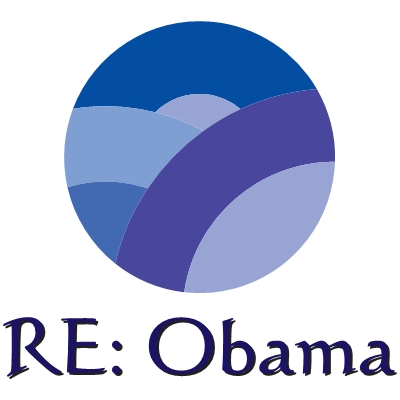While the Food and Drug Administration has successfully prevented 137 drug shortages since the beginning of 2010, drug shortages have been increasing in frequency and severity in recent years and adversely affecting patient care. A small number of drugs in the U.S. experience a shortage in any given year, but the number of reported prescription drug shortages in the United States nearly tripled between 2005 and 2010, going from 61 to 178. There are many causes and potential solutions to this challenge and addressing this significant public health problem will require the urgent attention of industry, other stakeholders, and government.
Today, President Obama will issue an Executive Order directing the FDA and Department of Justice to take action to help further reduce and prevent drug shortages, protect consumers, and prevent price gouging. These additional steps for early notification will help achieve some of the goals of bipartisan legislation in Congress, which the President supports, that will strengthen the FDA’s ability to prevent prescription drug shortages in the future.
The Executive Order is one in a series of steps that will help address the shortage of prescription drugs and ensure patients have access to the lifesaving medicines they need. Today, the Obama Administration will also:
- Send a letter to drug manufacturers reminding them of their legal responsibility to report the discontinuation of certain drugs to the FDA. The letter also encourages companies to voluntarily notify FDA about potential prescription drug shortages in cases where notification is not currently required.
- Increase staffing resources for the FDA’s Drug Shortages Program to address the increased workload that will result from additional early notification of potential shortages by manufacturers.
- Release a report from the Department of Health and Human Services Office of the Assistant Secretary for Planning and Evaluation (ASPE) that assesses the underlying factors that lead to drug shortages, and an FDA report on its role in monitoring, preventing, and responding to these shortages.
President Obama’s Executive Order
Early notification of potential drug shortages can help FDA work with drug manufacturers, hospitals, doctors, and patients to prevent or mitigate a shortage before it becomes a crisis. Currently, Federal law requires drug manufacturers to notify FDA when production of critical drugs provided by only one manufacturer is being discontinued. The President’s order directs FDA to broaden reporting of potential shortages of certain prescription drugs. Additionally, the Executive Order requires FDA to expand its current efforts to expedite review of new manufacturing sites, drug suppliers, and manufacturing changes to help prevent shortages.
While additional manufacturing capacity is necessary to fully address the drug shortage problem, early disclosure can have a significant, positive impact on the incidence and duration of drug shortages. This year alone, voluntary early notification by manufacturers allowed FDA to successfully prevent 99 drug shortages. Once FDA is notified of an existing shortage, the agency has multiple options to prevent or mitigate the drug shortage, and in many cases, takes more than one action. In the shortages studied, the agency’s three most common actions were:
- Asking other firms to increase production (31%),
- Working with manufacturers to identify ways to mitigate quality issues, i.e. flexibility through regulatory discretion (28%), and
- Expediting review of regulatory submissions (26%).
FDA has also exercised regulatory discretion regarding controlled importation of similar products approved abroad but not approved in the United States in 5 percent of cases.
Fighting Price Gouging
The President’s Executive Order also directs FDA to work with the Department of Justice to examine whether any secondary drug wholesalers or other market participants have responded to potential drug shortages by illegally hoarding medications or raising prices to gouge consumers. For example, the ranking member of the House Committee on Oversight and Government Reforms, when announcing his investigation into so-called gray markets, expressed concerns about a report that a leukemia drug whose typical contract price is about $12 per vial was being sold at $990 per vial – 80 times higher. A Premier healthcare alliance report released in August estimated that the typical gray market vendor marks up prices by an averaged 650 percent. At the extreme, a drug used to treat high blood pressure that was normally priced at $25.90 was being sold at $1,200 due to a shortage.
Pending Legislation
These additional steps for early notification will help achieve some of the goals of bipartisan legislation sponsored by Senator Amy Klobuchar (S. 296) and Congresswoman Diana DeGette (D-CO) (H.R. 2245). Backed by the President, this legislation would require all prescription drug shortages to be disclosed and give the Food and Drug Administration new authority to enforce these requirements. In the meantime, to complement the broadened notification and consistent with the goals of this legislation, the FDA will establish a voluntary notification process that will encourage manufacturers to disclose more potential shortages.
Increased Staffing Resources for the FDA Drug Shortages Program
Over the coming weeks, the FDA will tap six to eight members of a surge team with critical skills from across the Department to work in the Drug Shortage Program to enhance the Agency’s ability to prevent and mitigate drug shortages as a result of increased early notification by manufacturers. When FDA becomes aware of a potential drug shortage, this Program works collaboratively with the affected firms to return the product to its usual market availability as quickly and as safely as possible while helping prevent any harm to patients. It also encourages other firms that make the drug to ramp up production if they are willing to do so, expedites the review of submissions from manufacturers which may include requests to extend the expiration date of products, increase capacity, use a new raw material source, license new manufacturers, and permit changes in product specifications. And, for manufacturing and quality problems, FDA works with the firm to address the issues.
New Analyses from the Department of Health and Human Services
The HHS Assistant Secretary for Planning and Evaluation conducted an assessment of the underlying economic factors that lead to prescription drug shortages, particularly market factors that have contributed to shortages of sterile injectable oncology drugs. The report finds that over the last several years, growth in demand has occurred while the capacity of manufacturing facilities has remained stable, unable to keep up with demand. Although sterile injectable drugs are a small percentage of the overall prescription drug market, they make up a disproportionate share of drugs in shortage and include critical drugs, such as oncology drugs. Their report concludes that over time, entry of additional manufacturing facilities, and expansions in capacity should reduce the frequency of shortages due to supply disruptions. The Administration plans on further outreach the industry, oncologists, and people with cancer to identify additional ideas on actions.
In addition, to better understand drug shortages, the FDA conducted a review of medical product shortage activities in its four medical product Centers, with an emphasis on reviewing what the agency has already done and is currently doing to address drug shortages. FDA also spoke with external stakeholders to understand their perspectives on the current drug shortage problem. Based on these conversations, a review of published and unpublished information on drug shortages, and analyses of databases either available or created for the report, the reports find that the shortage problem is complex and stems from economic, legal, regulatory, policy, and clinical decisions that are deeply interconnected. FDA continues to work with manufacturers to help prevent and mitigate these shortages, but many potential solutions to drug shortages will require collaborative efforts among all relevant stakeholders.
Key Facts about Drug Shortages
- The number of reported drug shortages annually has tripled from 61 in 2005 to 178 in 2010.
- Of the 127 studied shortages in 2010-11, 80 percent involved drugs delivered to patients by sterile injection, including oncology drugs, antibiotics, and electrolyte/nutrition drugs.
- The leading reasons for the reported shortages were problems at the manufacturing facility (43%), delays in manufacturing or shipping (15%), and active pharmaceutical ingredient shortages (10%).
- Manufacturing quality problems that have resulted in shortages can be serious, including findings of glass shards, metal filings, and fungal or other contamination in products meant for injection into patients.
- Sterile injectable drugs have unique manufacturing and market features which make shortages of these products more likely to occur and harder to prevent or mitigate,including:
- Manufacturing them is complex and can more easily lead to problems that affect safety,
- Dedicated manufacturing lines are often required,
- The top three generic injectable manufacturers hold 71% of the market by volume,
- Most sterile injectables have one manufacturer that produces at least 90% of the drug, and
- “Just in time” manufacturing and inventorying practices leave little margin for error.



